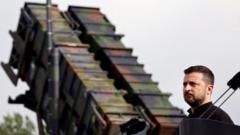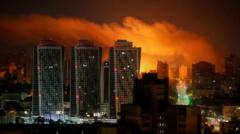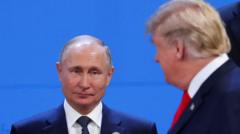Zurab Tsereteli, a significant figure in contemporary sculpture, passed away at 91, leaving behind a legacy defined by grand monuments that polarized opinions in Russia and beyond. His monumental pieces celebrated figures like Putin and challenged perceptions of art in post-Soviet landscapes.
Remembering Zurab Tsereteli: A Controversial Giant of Sculpture

Remembering Zurab Tsereteli: A Controversial Giant of Sculpture
The towering influence of Zurab Tsereteli, the Georgian-Russian artist, is marked by monumental works that resonated with political leaders but faced public criticism.
Zurab K. Tsereteli, the Georgian-Russian sculptor known for his monumental artworks that garnered both admiration and disdain, died recently at the age of 91 at his residence just outside Moscow. His passing was confirmed by his assistant, Sergei Shagulashvili, and elicited a response from Russian President Vladimir V. Putin, who honored Tsereteli as "an outstanding representative of multinational Russian culture."
Tsereteli's artistic journey included creating a gigantic bronze statue of Putin in 2004, which depicted the Russian leader in a judo outfit, but it failed to gain public favor and remained unsold. His bold style and vivid works shaped the visual identity of post-Soviet Russia while bridging gaps between Georgian and Russian cultures. Tsereteli seized opportunities to be recognized both in the Kremlin and in the artistic circles of Georgia, despite the latter's contentious relationship with Moscow.
Among his prominent works is the Freedom Monument in Tbilisi, which stands where a statue of Vladimir Lenin once occupied its space prior to the fall of the Soviet Union. Despite facing criticism from some locals for remaining in Russia, Tsereteli's creations left a lasting mark on the cities he worked in and reflected the dramatic shifts in their political landscapes.























